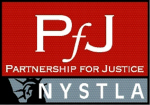“Let us never negotiate out of fear. But let us never fear to negotiate.” – John F. Kennedy
 JFK was thinking about diplomacy with the Russians when he uttered his famous phrase about fear and negotiation. But I think his words also hold true for the approach we take to most personal injury mediations. We never want our clients to head into a mediation session showing anything but the utmost confidence in the merits of the underlying legal case. But even assuming the law and facts are on your side, there is almost always something to be gained by trying to negotiate a settlement and thereby avoiding the expense and uncertainty that goes along with a courtroom trial.
JFK was thinking about diplomacy with the Russians when he uttered his famous phrase about fear and negotiation. But I think his words also hold true for the approach we take to most personal injury mediations. We never want our clients to head into a mediation session showing anything but the utmost confidence in the merits of the underlying legal case. But even assuming the law and facts are on your side, there is almost always something to be gained by trying to negotiate a settlement and thereby avoiding the expense and uncertainty that goes along with a courtroom trial.
Negotiation lies at the heart of any mediation. We actually think of negotiation as a process with two distinct stages. It starts with a demand stage in which one or both parties put their positions on the table. The demand stage establishes the framework for the negotiation stage that immediately follows, in which the parties will go back and forth however many times in order to reach a mutually acceptable settlement. As we see it, each of these stages presents a unique set of challenges and issues to be considered for any given litigation. There is an art to making a demand, and there is an art to negotiation, each of which is worth separate discussion. In the remainder of this week’s blog post, we will turn our attention to the art of the demand and then next week we will follow up with a discussion about the art of negotiation.



